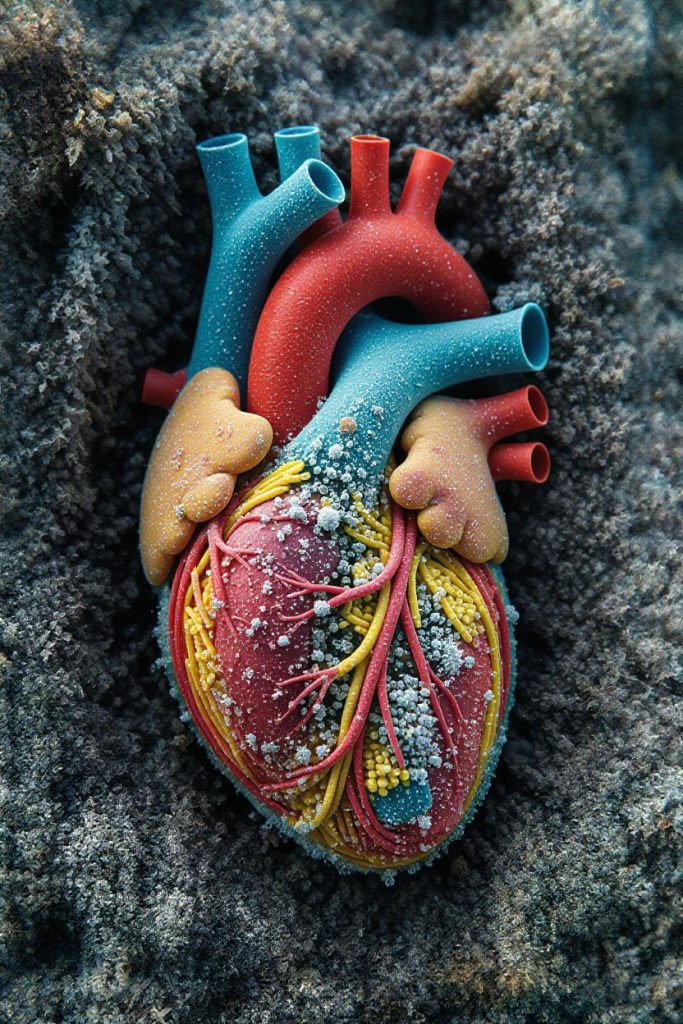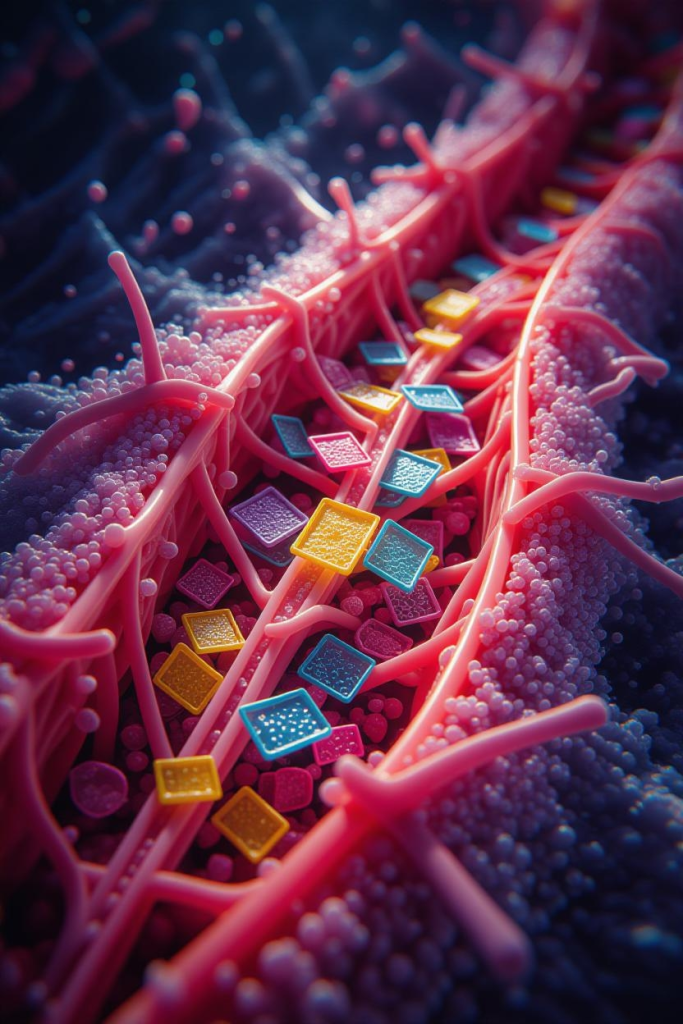
A STARTLING NEW DISCOVERY
For the first time, scientists have discovered microplastics and nanoplastics embedded inside human artery plaque and the findings are raising serious concerns about heart health.In a 2024 study published in the New England Journal of Medicine (NEJM), researchers analyzed carotid plaque samples from 257 patients who underwent surgery to clear artery blockages. The goal was to see whether plastic particles had worked their way into the body’s blood vessels.
WHAT THE STUDY FOUND
The results were both fascinating and frightening:
- 58% of patients had polyethylene (PE) : the most common plastic used in bottles and packaging inside their plaque.
- 12% had polyvinyl chloride (PVC) : used in pipes, flooring, and other industrial materials.
- Over a three-year follow-up, those whose plaque contained plastic particles were 4.5 times more likely to suffer a stroke, heart attack, or death compared with those whose arteries were plastic-free.
Microscopic imaging revealed jagged plastic fragments lodged among immune cells, suggesting that the particles might be contributing to inflammation and plaque instability.

A SECOND STUDY STRENGTHENS THE LINK
In another study presented in 2025, scientists examined carotid plaques in stroke patients and found:
- Symptomatic plaques contained 51 times more micro- and nanoplastics than healthy artery tissue.
- Even asymptomatic plaques had 16 times higher levels.
- The presence of plastics was associated with gene activity linked to inflammation and tissue damage, which could explain why these plaques are more likely to rupture and cause a stroke.
WHAT THIS MEANS FOR YOUR HEART
Scientists believe microplastics can enter the bloodstream through food, water, and air, eventually accumulating in artery walls. There, they may trigger inflammation, oxidative stress, and tissue injury, much like cholesterol buildup.While the studies are observational, meaning they can’t yet prove microplastics cause heart disease, the evidence suggests a strong correlation. The particles could be an emerging, invisible risk factor for cardiovascular events.
THE BIGGER PICTURE: FROM ENVIRONMENT TO ARTERIES
Plastic pollution has long been viewed as an environmental crisis, harming oceans and wildlife. But these new findings show it’s also a human health story written in our arteries.Microplastics have already been detected in the lungs, liver, placenta, and bloodstream. Now, the discovery of plastics in arterial plaque adds an alarming new dimension: pollution might literally be clogging our hearts.
SIMPLE WAYS TO REDUCE YOUR EXPOSURE
Although it’s impossible to avoid plastics entirely, small changes can help limit your exposure:
Use glass or stainless-steel containers instead of plastic ones.
Avoid microwaving food in plastic heat accelerates chemical leaching.
Choose filtered or tap water (when safe) instead of bottled water.
Limit single-use plastics, especially those that come in contact with food.
Ventilate indoor spaces, since airborne microplastics are now known to exist in household dust.
SUMMARY
Microplastics are no longer just a pollution problem they’re a public health warning. As researchers continue to uncover how these particles interact with human tissues, one thing is clear: reducing our reliance on plastic isn’t only good for the planet it might save our hearts.
References
- New England Journal of Medicine (2024): “Microplastics and Nanoplastics in Human Carotid Plaques.”
- The Guardian (2024): Microscopic plastics could raise risk of stroke and heart attack, study says
- Health.com (2024): Microplastics Found in Clogged Arteries Linked to Greater Risk of Heart Attack, Stroke
- American Heart Association (2025): “Plaque buildup in stroke survivors may be loaded with microplastics.”

